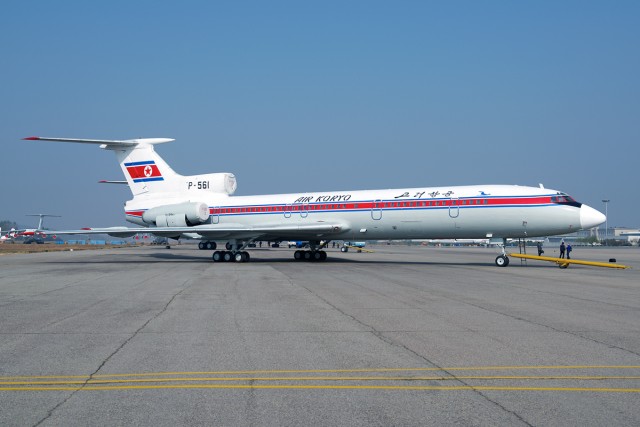
An Air Koryo Tu-154B-2 parked on the ramp at FNJ – Photo: Bernie Leighton | AirlineReporter
I have a strange and obsessive love for the Tupolev Tu-154. How obsessive, you ask? Well, take a look at my model cabinet. That’s right. I own every possible Tu-154 model out there. I even have a few custom ones on order.
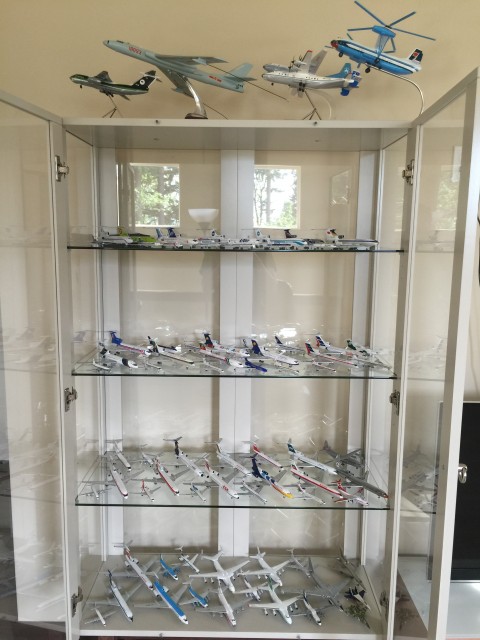
No one can say I don’t love the Tu-154 – Photo: Bernie Leighton | AirlineReporter
I seek out 154s to fly on; I have three lined up this year.
So, what makes this plane so awesome? Well, I was going to do an article last year about what it was like to fly on an 154M, but then Jacob flew on a better M on almost the same day. So we’ll have to wait for the 154Bs later this year (the older, rarer version of the 154).
Until then, let’s discuss the history of this aircraft.
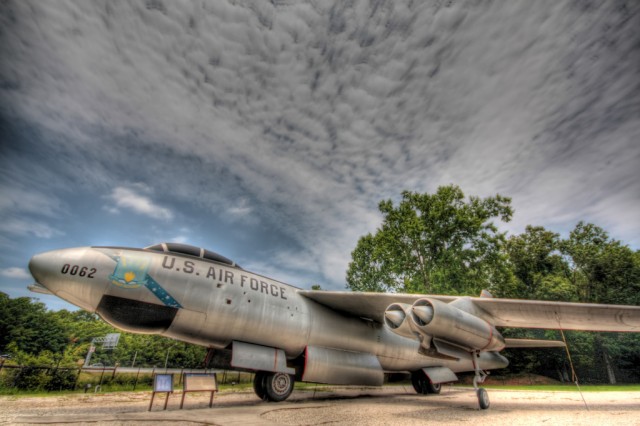
Boeing B-47 Stratojet – Photo: Ahren | Flickr CC
On December 17, 1947, Boeing’s B-47 Stratojet took to the skies. The era of the jet-bomber had commenced, and the Russians had nothing. Of course, it’s no question to those familiar with Soviet aviation politics of the era to assume who was given the order to directly counter the B-47. For those of you less familiar, it was Andrei Tupolev. Using the TsAGI (Central Aerohydrodynamic Institute) data that would later beget the creation of the Tu-95, Tupolev would create the wildly-successful Tu-16. This would have been sufficient if it was not immediately apparent that the Americans and the English were working on jet bombers with truly intercontinental range. Stalin demanded parity with the West by any means necessary.
What resulted was something rather surprising. His trusty servant Tupolev replied with something slightly more rude than “excuse me, I am busy working on the Tu-16 and the Tu-80 right now – I can’t work miracles.” Standing up to Stalin was, in general, a bad idea. So Stalin came back and offered to give this project “All Union” importance. Tupolev continued to turn him down. The real reason behind Tupolev’s refusal was that he simply did not trust the state of Soviet turbojet technology’s abilities to create a truly intercontinental bomber. Fast way to an early retirement in Crimea, for most.
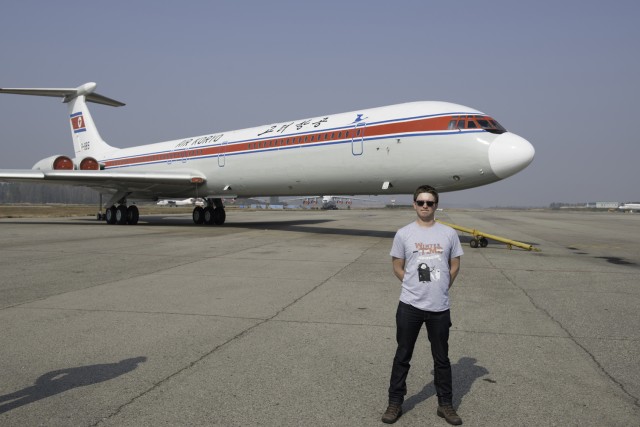
Bernie standing in front of a Air Koryo IL-62 – Photo: Bernie Leighton
We always love when other media outlets want to share some AvGeek goodness. This story posted today on CNN, written by Thom Patterson, talks about some of the adventures that our Bernie Leighton and others have had chasing old Russian metal in North Korea. Here is an except:
The moment he stepped aboard the North Korean airliner, Bernie Leighton felt like he’d entered a Cold War time machine.
For an aviation enthusiast like Leighton, it was nothing short of thrilling. After years of anticipation, Leighton, a real estate investor, finally snagged a seat on a rare 1980s Soviet-built Ilyushin IL-62 airliner.
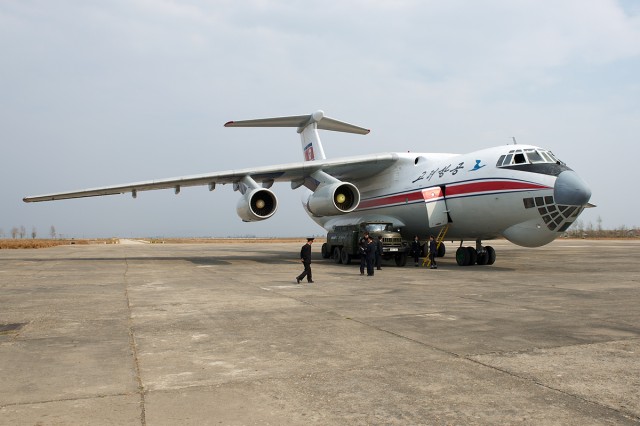
Air Koryo’s IL-76 with a Russian made ground-start vehicle – Photo: Bernie Leighton
Patriotic military music filled the cabin. Flight attendants handed out communist propaganda magazines. As Leighton put it, that 2012 flight on Air Koryo airlines from Beijing to Pyongyang was an experience “beyond belief.”
That’s high praise. Leighton may rank among the most accomplished “avgeeks” in the world. He said he’s flown on at least 50 kinds of aircraft and racked up an estimated 2 million air miles.
“The IL-62, by Western standards, was quite old, but it was actually one of the newer planes I flew on while I was there,” Leighton said. Only a handful still fly in commercial service worldwide, he said.
Continue reading Stalking North Korea’s Odd Cold War Time Machines on CNN.com
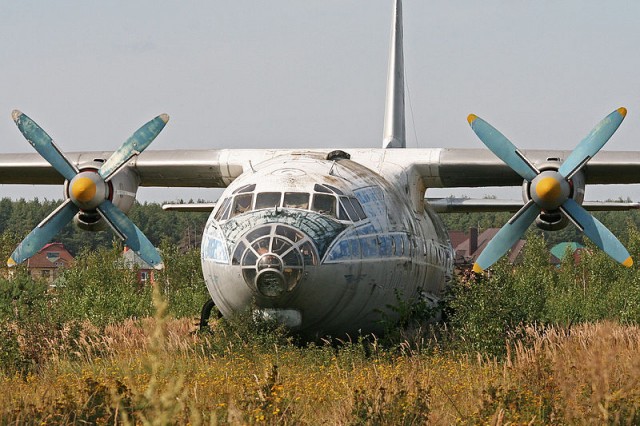
An AN-10 at the Monino Aviation Museum – Photo: Alan Wilson
When most people think about Soviet, four-engine, turbine passenger aircraft, they tend to think about the “classics”; the IL-18 and the Tu-114. There are reasons, of course, why the Antonov AN-10 doesn’t immediately jump to mind – but that ignores the significant contributions it made to domestic travel within the Soviet Union.
The Tupolev Tu-104 was a great aircraft, and when prestige mattered more than unit cost, it was a perfect way of showing Soviet aeronautical achievement abroad. Russian flag carrier Aeroflot, however, was directed to offer cost-effective transport to all points within the Soviet Union and satellite states. There was another issue; the Tu-104, while durable by early jet standards, was still difficult to maintain after frequent operations on “less prepared” airfields.
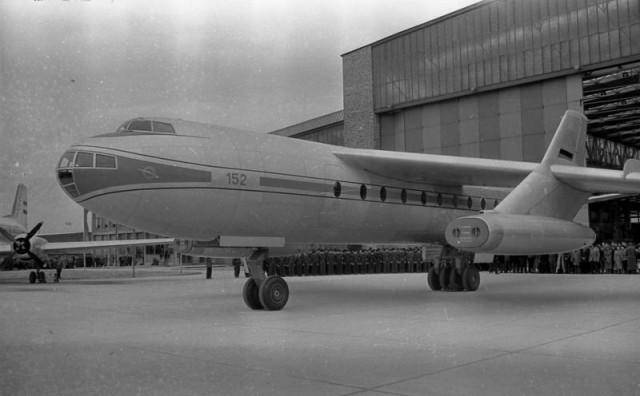
The Baade 152 rolls out – Photo: Bundesarchiv, Bild 183-54953-0004 / CC-BY-SA
The Junkers Ju-287 was never meant to be a transport plane; it was supposed to be another Nazi doom weapon that was nothing but the fever dream of Hermann Goering and his cronies. However, because of different circumstances, the aircraft would end up becoming Germany’s first airliner, the Baade 152 – which never entered service.
It was designed as a mid-winged monoplane bomber with either two or four BMW 003 engines, depending on the availability of basic aviation necessities like fuel and aluminum. It did have some notable technological advances for its time, however. It featured a forward-swept wing and (allegedly) a high cruise speed.
At the end of the war, the Soviets “inherited” a nearly-complete version of the Ju-287, which they called the OKB-1 EF-131. It had two wing-root mounted engines and a flight deck styled after the older Ju-88. When that design went nowhere, it was transferred to the Alekseyev Design Bureau [try not confuse Semyon Alekseyev with Rostislav Alekseyev – the father of modern wing-in-ground effect aircraft].






